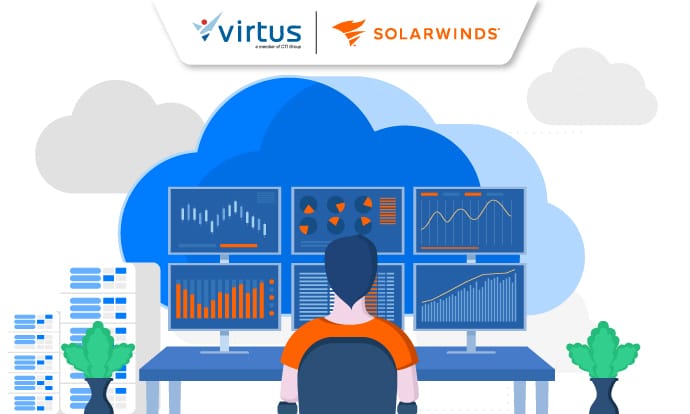Managing hybrid cloud environments is challenging for many enterprises. While hybrid cloud setups offer flexibility and scalability, the complexity involved can be daunting for many organizations.
Hybrid cloud management requires the ability to oversee diverse environments while safeguarding sensitive data. Without the right strategies and tools, businesses may struggle to implement hybrid cloud solutions effectively. This article explores the importance of hybrid cloud management and highlights tools that can make the process seamless for your organization.
What is Hybrid Cloud Management?

Hybrid cloud management refers to the process of overseeing, managing, and optimizing IT infrastructure and services across multiple cloud environments and on-premises setups. This involves leveraging specialized software and tools to handle dynamic and complex cloud environments, ensuring enhanced efficiency, flexibility, and security.
Hybrid cloud management combines managing hardware resources from multiple public clouds with private cloud setups in on-premises data centers. It has emerged as companies adopt data security policies prohibiting certain information or software codes from being hosted remotely on third-party hardware.
Why is Hybrid Cloud Management Essential?
Hybrid cloud management efficiently utilizes public cloud hardware resources for data center administration or web hosting needs. This allows IT professionals to achieve the lowest management costs for complex systems with competitive hardware pricing across all platforms while avoiding vendor lock-in that can lead to higher costs.
It is a critical aspect of modern business operations to boost flexibility, efficiency, visibility, and security. Companies gain the flexibility to select the best solution for each workload, whether on a private cloud, public cloud, or on-premises environment. The process also helps optimize resource utilization by automating routine tasks and dynamically allocating resources.
By effectively managing hybrid cloud environments, companies can gain comprehensive visibility, simplify problem identification, and enhance decision-making. Additionally, hybrid cloud management ensures data and application security by enforcing consistent policies across environments.
Benefits of Hybrid Cloud Management
As workloads span across multiple sources, businesses require efficient management solutions. Here are some key benefits of hybrid cloud management:
Infrastructure Management
Streamline the management of data, servers, and application lifecycles across environments, including edge computing, to reduce latency and enhance user experiences.
Improved Availability
Ensure IT services remain reliable and consistently available to support dynamic business growth.
Enhanced Observability
Leverage observability features to automate monitoring and provide visibility into enterprise applications, enabling faster and more accurate issue resolution.
Application Modernization
Support application modernization efforts by breaking down monolithic applications into microservices, boosting innovation, and speeding up updates.
Greater Efficiency
Reduce the time and cost required to manage complex IT infrastructures.
Better Flexibility
Adapt IT infrastructure—such as networking, data storage capacity, and processing capabilities—to meet ever-changing business needs.
Enhanced Security
Protect sensitive data and applications from evolving security threats.
How Hybrid Cloud Management Addresses Challenges?
Hybrid cloud management helps companies overcome various complexities, including:
Ensuring Security
Hybrid cloud implementation involves transferring sensitive data across different environments, increasing the attack surface. Misconfigurations can lead to vulnerabilities, posing cybersecurity risks.
Monitoring and Visibility
Monitoring hybrid and multicloud environments can be challenging due to fragmented data and limited insights, impacting business decision-making.
Cost Control
Hybrid cloud management helps companies control cloud billing, avoiding pay-as-you-go models that can escalate costs while addressing billing complexities.
Hybrid Cloud Management Strategies
Hybrid cloud management helps IT teams reduce the complexity of infrastructure management while ensuring security for databases and software. It enables the modernization of legacy applications and containerization for Kubernetes deployment.
Containers offer a much more efficient virtualization method compared to previous generations, aligning perfectly with best practices in DevOps. By implementing elastic web server strategies, businesses can maintain always-on web and mobile applications without incurring extra costs due to overcapacity.
Introducing SolarWinds Hybrid Cloud Observability: A Reliable Tool for Hybrid Cloud Management
After understanding the importance and benefits of hybrid cloud management, it’s time to explore reliable tools for your business. SolarWinds Hybrid Cloud Observability is a dependable solution for managing hybrid cloud and on-premises environments.
Powered by AIOps, SolarWinds Hybrid Cloud Observability is designed to ensure system availability and reduce downtime across local and hybrid cloud environments. It enhances visibility, intelligence, and productivity for IT teams.
With its end-to-end observability capabilities, SolarWinds integrates with various systems and platforms to provide comprehensive insights into diverse IT environments. It simplifies operational complexities by managing intricate infrastructures and consolidating monitoring, warning, and troubleshooting functions.
This solution also improves cost efficiency and resource optimization, including effective allocation of resources and minimizing downtime. Additionally, SolarWinds facilitates security monitoring and ensures compliance with industry regulations.
How Hybrid Cloud Observability Works?
Hybrid cloud observability operates through a series of steps to identify and resolve issues efficiently.
1. Data Collection
Quantitative data such as CPU, memory, disk usage, and network bandwidth are collected. Errors, warnings, and other critical information, including request-response flows in complex systems, are tracked to monitor data journeys between services.
2. Data Processing
Collected data from multiple sources is standardized into a uniform format. This data is then aggregated and analyzed using advanced algorithms to identify patterns, trends, and anomalies.
3. Visualization
Analyzed data is presented through user-friendly visuals like graphs or charts. Notifications are triggered if anomalies or issues arise.
4. Root Cause Analysis
By correlating various data points, the system identifies the root causes of issues quickly and accurately. Debugging tools can also be utilized for in-depth problem analysis.
SolarWinds Hybrid Cloud Observability Features
SolarWinds Cloud Observability offers several standout features:
Unified Visibility
Provides a single-pane view across hybrid environments for seamless monitoring of on-premises, cloud, and multi-cloud resources.
Comprehensive Performance Monitoring
Tracks performance across applications, infrastructure, and networks, delivering detailed insights into system health and performance metrics.
Automation and Smart Alerts
Advanced analytics proactively detect critical issues, while automation handles routine tasks, reducing manual intervention.
Root Cause Analysis and Troubleshooting Tool
Features like dependency mapping and intelligent correlation expedite issue resolution and improve efficiency.
Scalability and Customization
SolarWinds grows with your business, supporting various infrastructure configurations and adapting to your unique needs.
Read More: Network Monitoring: The Key to a Stable and Uninterrupted Office Network
Benefits of SolarWinds Hybrid Cloud Observability
SolarWinds Hybrid Cloud Observability delivers the following key benefits:
Deep Visibility
Gain in-depth visibility into networks, servers, applications, and databases.
Unmatched Network Control
Enhance network management with superior monitoring, configuration, and traffic analysis.
Advanced Server and Application Monitoring
Simplify performance monitoring and capacity planning in hybrid and on-premises environments.
Security
Real-time visibility helps detect and respond to threats promptly, enhancing security and minimizing risks.
Intelligent Alert
AIOps -powered alerts use machine learning to detect anomalies and provide timely notifications.
Future-Proof IT
Built for scalability, flexibility, and performance to meet evolving business needs.
Get SolarWinds Hybrid Cloud Observability from Virtus
Virtus Technology Indonesia (Virtus), an authorized SolarWinds partner, offers end-to-end Hybrid Cloud Management solutions. With expert IT support, Virtus as part of CTI Group, ensures seamless implementation of SolarWinds Hybrid Cloud Observability—from consultation and deployment to management and after-sales support.
Interested? Click the link to get a FREE consultation, trial, or demo with Virtus.
Author: Ervina Anggraini – CTI Group




























